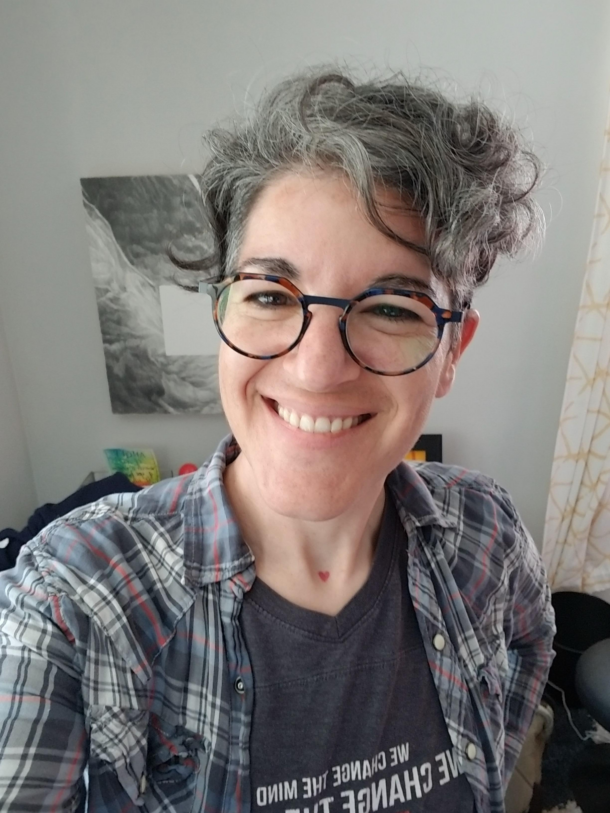Some years ago, Theresa was working at a coffee shop. Among her coworkers was a teenage girl who seemed, understandably, utterly disinterested in us.
Or, at least, it was understandable to me until I saw her walking down the street with her fingers entwined with those of another young woman. Then, I was baffled.
Coming of age in the ‘90s – my first serious relationship with a woman started in 1997 – meant looking for the subtle signs of queerness hidden beneath the straight-passing facade much of the time. When a lesbian nurse practitioner joined my dad’s medical practice in the early 2000s, for example, that she spoke about her partner without any hesitation or parsing was so novel that it was a story in our family. “And she has a picture of her partner in her office!”
Without living it, it can sound ridiculous. Having lived it, Theresa’s young coworker’s seeming-apathy at having us older, out queer folks around struck me as remarkable… and as a quiet moment of seeing her ease as a sign of our community-wide advances.
![]()
As though the turn of the New Year broke a seal, it was in the first week of January that people started sharing their fear of the coming presidential election with me. With stomachs roiling and catastrophizing in full swing, the conversations began to unfurl, bringing forth in vivid imagination, as thought factual premonitions, futures in which a person’s healthcare, safety, values – one’s very ability to thrive – has been erased by a tipping ballot in a digital box.
I’m not saying these futures aren’t possible. They are.
I’m saying that we humans are exquisitely skilled at imagining and equally terrible at predicting.
I’m saying that catastrophizing uses up energy and emotional bandwidth without providing a protective payoff anywhere equal to the exertion.
I’m saying that in the 25 years since my first queer relationship and my queer marriage, I’ve seen meaningful positive change.
Not enough change.
There is never enough change when it comes to honoring all humans as exactly that: human.
But meaningful change.
![]()
John Lewis, in his memoir Across That Bridge: A Vision for Change and the Future of America, wrote:
Faith, to me, is knowing in the solid core of your soul that the work is already done, even as an idea is being conceived in your mind. It is being as sure about your dreams as you are about anything you know as a hard fact… Even if you do not live to see it come to pass, you know without one doubt that it will be…
What we were communicating through nonviolent protest, what we were demonstrating by being willing to put our bodies on the line, was that love had already overcome hate, that the pages of America’s book had already been written, that this nation’s destiny was already sealed in the moment it was founded, so every expression of evil, including segregation, could never stand.
I feel confident – as confident as I feel about anything – that humanity’s overarching trend is toward collaboration, cohesion, and less and less violence.
And I can no more predict that future than the dystopian one woven into the catastrophic premonitions of my recent conversations.
What I can predict, though, is that just as we tend to move toward where we’re looking, we tend to behave toward what we believe is possible.
Which is to say, if I allow myself to believe the future is nothing but cataclysm, I’ll inadvertently do my part to see that future into fruition.
And if I join the late, great John Lewis in holding the vision of better as a reality that has yet to come, I’ll angle my efforts, conscious and unconscious, toward that end.
We are a part of an unbroken chain of history creating the now that we have the opportunity – the responsibility – to shape.
That fear is here is understandable.
Whether we let fear shape our actions is up to us.
